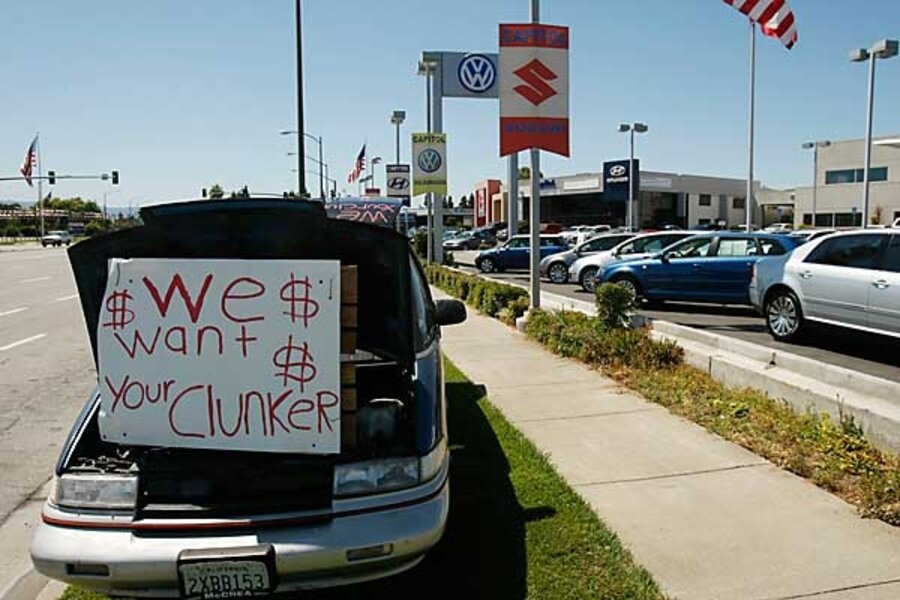Is 'Cash for Clunkers' stalling out?
Loading...
The so-called "Cash for Clunkers" program started out as a cash cow, spurring a big increase in automotive sales this summer. Now, the program itself may be turning into a clunker.
What's happening is that the people most interested in trading in an old car – and getting a generous credit on the purchase of a new one – already rushed to participate in the program's first wave.
Now there's no longer that big a lineup of eager consumers, according to Edmunds.com, a leading provider of automotive information. Meanwhile, Congress has provided more money for credits, so consumers aren't in an offer-expires-soon rush.
Edmunds tracks the level of car shoppers’ "intent to purchase." On Tuesday, the firm reported, purchase intent is down 31 percent from its peak in late July.
“Now that there is plenty of money in the [clunkers] program and the most eager shoppers have already participated, the sense of urgency is gone,” Jeremy Anwyl, chief executive of Edmunds.com, said in a statement. "Inventories are getting lean and prices are climbing, giving consumers reasons to sit back."
The Cash for Clunkers program, signed into law by President Obama earlier this year, has two goals – environmental and economic. The undertaking promises to curb greenhouse emissions by sending gas-guzzling cars (ones that get 18 miles per gallon or less) to the junkyard. And it could help revive the recession-battered car industry, using taxpayer cash to lure on-the-fence car shoppers to dealerships.
As the incentives went into effect this summer, a rush of eager buyers ran through the initial $1 billion. Dealerships began having a welcome problem: a shortage of popular models instead of an inventory glut. Congress appropriated $2 billion more to keep the revved-up sales going.
But according to Edmunds, the most committed participants had already come and gone. Within days in fact, predict analysts at the firm, purchase intent will be back at levels seen before the clunkers program. This gauge of consumer intent tends to be a reliable forecaster of sales, they say.
If clunker trade-ins are on the wane, is this stimulus effort a failure?
The program has succeeded on one front, generating additional dealer traffic after a historic plunge. As the clunkers program launched, it helped push July car sales up sharply compared with the depressed pace of prior months, which was below 10 million units a year.
Many participants would have bought a new car in 2010 anyway, but they shifted their purchase forward to get the clunkers cash, industry analysts say. The result is one modest benefit for the economy: smoothing out the pace of activity at dealerships and factories so that more workers keep their jobs.
General Motors, for example, announced Tuesday that it would boost production, partly to keep up with the demand created by the clunkers program.
But the benefits come at a price. Taxpayer money may be needlessly subsidizing several people (who would have bought a car anyway) for every car purchase that the program truly "creates," Edmunds reckons. Taxpayers will bear a sizable cost. Each $1 billion in clunkers funding will cost about $50 million a year in interest – with no end unless the government repays that debt, figures David Kotok of Cumberland Advisors.
The program has also pushed up car prices, at least temporarily, by creating a flurry of demand, Edmunds says.
Whether you're a fan of the program or not, the question for Detroit is whether the summertime boost in car sales will last.





